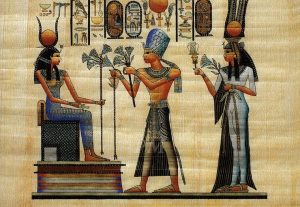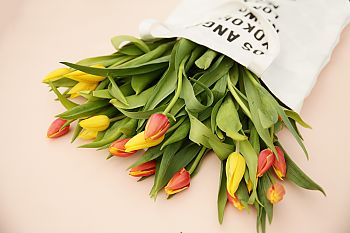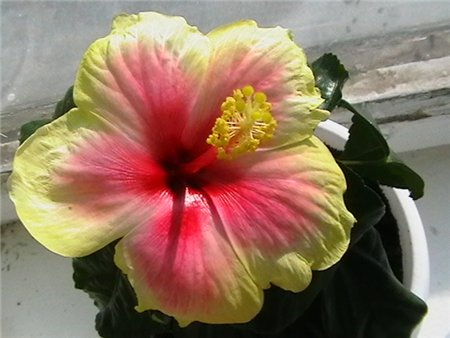Symbolism of flowers in different cultures
 At all times, people were surrounded by flowers. They decorated clothes and homes, added to food, presented as a sign of love or support. Flowers are able to convey our mood, our feelings in the most different moments of life, joyful or sad.
At all times, people were surrounded by flowers. They decorated clothes and homes, added to food, presented as a sign of love or support. Flowers are able to convey our mood, our feelings in the most different moments of life, joyful or sad.
It is difficult to imagine a world without flowers, they are our constant companions. Love for them is reflected in painting, poetry and even architecture. Different cultures and peoples have their own special attitude to flowers, but admiration for them is invariable.
The flower, due to the arrangement of petals that create the image of a star, often symbolizes the Sun
Flowers in Ancient Egypt
In ancient Egypt, flowers were used to decorate palaces. Statues of the gods and temples were decorated with them during the ritual ceremonies. Often, whole floral arrangements were used for this. Vases at that time had not one opening for a bouquet, but several so that flowers could be inserted separately.
Delicate lotus flowers were presented to the gods as a symbol of sacrifice. This tradition is still preserved in Buddhist temples, where flowers are placed in front of the image of the deity.
Flowers in Ancient Rome and Ancient Greece
Here, flowers were of great importance in religious rites. Fresh flowers and trees reflected a symbolic meaning. For example, the branches of oak (as a symbol of power and strength) were decorated with statues of Zeus – the main god in mythology. The olive branches were a sign of the goddess of wisdom Athens, the coastal pine was associated with Poseidon, the god of the seas and oceans.
Also, flowers were presented to newlyweds at weddings, winners of competitions and generals. In this case, preference was given to compositions in the form of wreaths.
Images of flowers can be found on ancient Egyptian papyrus
Flowers in medieval Europe
Here, flowers were also associated with religious symbols. They decorated the interiors of monasteries and churches. The flower symbolizing the purity and purity of the Virgin Mary was a lily. Red rose petals denoted the shed blood of Jesus Christ, and irises – his suffering and torment.
During rural holidays, women decorated themselves with wildflowers, such as lavender. Fragrant herbs, dill or mint, were also held in high esteem.
Flowers in Indonesia and India
From antiquity to our time, it is impossible to imagine a single altar in India, at home or in a temple, without flowers. There are beliefs about what kind of flowers should be offered to one or another deity, and some varieties are generally prohibited due to the curse allegedly imposed on them.
There is a tradition to shower with petals not only statues of gods, but also newlyweds, important guests, birthday people. It is better to choose flowers without a strong smell and refuse broken and withered. During various celebrations, it is difficult to imagine a woman or a girl who has not adorned herself with bright, vivid colors.
The love of flowers is reflected in many paintings by famous artists
Flowers in Eastern Countries
The peoples of the East love flowers with all their hearts. A large place in the history of culture is occupied by Japanese ikebana art. The Japanese grew flowers and gave them unusual, beautiful and poetic names. For example, a yellow chrysanthemum could be called a “fluttering golden moth.” Fresh flowers have always been a source of inspiration for Japanese and Chinese artists, authors of frescoes, mosaics, woodcarvers. Without floral patterns, it is hard to imagine Chinese carpets and silk.
Flowers in Ancient Russia
Flowers symbolized the end of winter, vitality. In Russia, not a single holiday was complete without flowers. For example, on Ivan Kupala, young girls wove wreaths, and the interwoven flowers had a certain meaning. Chamomile is a symbol of innocence, poppy is a rapidly passing girlish beauty. There was a belief that a girl with a wreath on her head has special, magical powers. It was believed that the wreath protects its mistress from evil forces. Shamans also believed that flowers could open the door to the other world.
Flowers with petals facing up symbolize the acceptance of a divine gift
In all cultures of the world, flowers reflect the cyclical nature of life. In the spring, they grow, bloom in the summer, wither in the fall, and die in the winter. This has been noted even in the Bible and Aztec writings. Ancient peoples noted: “Our body is like a flower: it blooms and withers.”
A flower is a symbol of joy, happiness and freshness. Flowers presented as a gift help convey feelings and emotions. Declaration of love, congratulations on an important event in life, support in difficult times – this is what a bouquet can help you with, and a representative of any culture will agree with this.




